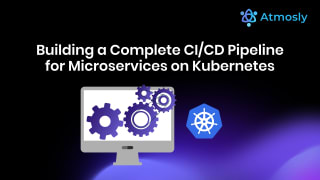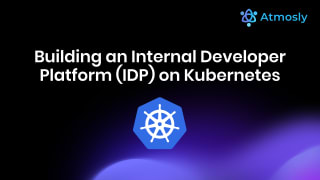Kubernetes Goes Cloud Neutral
Kubernetes, the leading container Orchestration platform, has taken a significant step towards true cloud neutrality with the release of version 1.31. This release, codenamed Elli, marks a major shift in the way Kubernetes integrates with cloud providers, making the platform more versatile and adaptable to diverse environments.
In previous versions, Kubernetes had built-in components, known as integrations, that directly supported various cloud providers, such as AWS, Azure, and Google Cloud. These integrations allowed Kubernetes to manage cloud-specific resources, like storage volumes and load balancers, directly from the core Kubernetes codebase.
However, starting from Kubernetes 1.26, the project began a process called externalization, where the code responsible for interacting with cloud services was moved out of the core codebase and into a separate component called the cloud controller manager. This change has several key benefits:

Despite the removal of the built-in cloud integrations, users can still integrate Kubernetes with cloud providers using external integrations or cloud controller managers. These can be part of the Kubernetes project but hosted separately, or they can be provided by third-party developers or the cloud providers themselves.
For example, instead of using the built-in integration for AWS Elastic Block Store (EBS) volumes, users can now use the AWS EBS Container Storage Interface (CSI) driver, which is an external component maintained by AWS. Similarly, users can find external integrations for Azure, Google Cloud, and other cloud providers.
This shift towards cloud neutrality in Kubernetes 1.31 is a significant milestone, making the platform more adaptable and versatile for organizations operating in multi-cloud or hybrid cloud environments.
AppArmor Support for Enhanced Security
Another major feature introduced in Kubernetes 1.31 is the addition of AppArmor support, which has graduated to stable status. AppArmor is a Linux security module that allows you to define security profiles for applications, ensuring that they only perform the actions they are supposed to perform.
In a Kubernetes environment, where multiple applications or services share the same cluster, the risk of a compromised container accessing sensitive data or interfering with other containers is a significant concern. AppArmor integration in Kubernetes 1.31 addresses this issue by allowing developers to define security rules directly within the Kubernetes configuration for their applications.
With AppArmor, you can create profiles that specify the actions an application or container is allowed to perform. For example, you can create a profile that allows an application to read certain files but not write to them, preventing unauthorized actions and limiting the potential damage if the application is compromised.
To use AppArmor in Kubernetes, you first need to define an AppArmor profile on the host system. You can then update the Kubernetes pod specification to include the AppArmor profile using the `container.apparmor.security.beta.kubernetes.io/[container_name]` annotation. When the pod is deployed, the container runtime will enforce the specified security rules, ensuring that the application only performs the actions it is allowed to perform.
While implementing AppArmor in production can come with its own challenges, such as creating detailed profiles for each container and managing multiple profiles across all Kubernetes nodes, the integration of AppArmor in Kubernetes 1.31 provides a powerful tool for enhancing the security of containerized applications.
Custom Profiles for the kubectl debug Command
Another notable feature introduced in Kubernetes 1.31 is the new custom profile section for the `kubectl debug` command, which has graduated to beta status.
The `kubectl debug` command is a valuable tool for developers and administrators to troubleshoot running applications in a Kubernetes environment. Previously, `kubectl debug` provided predefined profiles for debugging, but these were often insufficient for specific needs. Users might need to add environment variables, replicate volume mounts, or adjust security context to match the problematic container's environment.
The new custom profiling feature in Kubernetes 1.31 addresses these limitations by allowing users to define their own debugging profiles. This feature enhances the flexibility and effectiveness of the `kubectl debug` command by letting you pass a JSON file that specifies the container configuration you need.
With the custom profiling feature, you can create a JSON file that includes fields compatible with the core V1 container specification, such as ports, environment variables, and resource limits. When you use the custom profile, Kubernetes will merge it with the predefined profile, allowing your custom settings to override the defaults.
This flexibility ensures that the debug environment closely matches the actual running environment of the application, making it easier to identify and resolve issues. Additionally, custom profiles can help with debugging shell-less based images, as you can now mount necessary tools and resources into the debug container, even if the original container image lacks a shell.
Improved Connectivity and Reliability with kube-proxy Enhancements
Kubernetes 1.31 also introduces significant improvements to the kube-proxy component, which is responsible for managing network connectivity and load balancing within a Kubernetes cluster. These enhancements, which have graduated to stable status, focus on improving connectivity reliability and graceful node termination.
One of the key improvements is the way kube-proxy handles node termination during cluster autoscaling. Before the enhancement, when nodes were terminated to downscale a Kubernetes cluster, those nodes might still receive new traffic, leading to failed connections and a poor user experience. With the new changes, kube-proxy now detects a specific signal, the to-be-deleted taint applied by the cluster autoscaler, and stops receiving new traffic for the terminating node, allowing existing connections to finish smoothly.
Additionally, a new health check endpoint called liveness has been added to kube-proxy. Unlike previous health checks, which focused on the overall health of the Kubernetes cluster, the liveness endpoint provides a clear status of the kube-proxy component itself, indicating whether it is functioning properly. This improvement helps cloud providers and users to perform more reliable health checks for services using the external traffic policy cluster option, ensuring that the health of the service is accurately monitored and managed.
These enhancements to kube-proxy in Kubernetes 1.31 contribute to improved connectivity reliability, especially in scenarios where nodes are being terminated or scaled down. This helps maintain a smooth user experience and ensures that the Kubernetes cluster can gracefully handle changes in the underlying infrastructure.
Randomized Pod Selection for Replica Set Downscaling
Another significant quality-of-life improvement introduced in Kubernetes 1.31 is the randomized algorithm for pod selection during the downscaling of replica sets, which has graduated to stable status.
When a replica set is scaled down, Kubernetes needs to decide which pods to terminate to maintain the desired number of replicas. Previously, Kubernetes preferred to delete the pods that had been running for the shortest amount of time, assuming that newer pods were serving fewer clients and would cause less disruption.
However, this approach could lead to issues, especially in high-availability scenarios where pods are distributed across multiple failure domains, such as different availability zones in a cloud environment. By always removing the newest pods, Kubernetes could end up with an imbalanced distribution of pods across the available zones, potentially leaving some zones underrepresented.
The new randomized algorithm introduced in Kubernetes 1.31 addresses this issue by introducing randomness into the selection of pods for termination. Instead of always removing the newest pods, Kubernetes will now randomly choose which pods to terminate, ensuring a more balanced distribution across the available failure domains.
This enhancement helps maintain stability and high availability by preventing any single zone from becoming underrepresented. It also ensures a fairer approach to pod termination, preventing certain pods from being consistently chosen over others.
Other Notable Features
In addition to the major features discussed above, Kubernetes 1.31 also includes several other enhancements that have graduated to beta or stable status, including:

Conclusion
Kubernetes 1.31, codenamed Elli, brings a host of significant improvements and enhancements to the leading container orchestration platform. From achieving true cloud neutrality to integrating AppArmor for enhanced security, and from introducing custom debugging profiles to improving connectivity reliability, this release showcases the continued evolution and maturity of Kubernetes.
These advancements in Kubernetes 1.31 demonstrate the platform's commitment to adaptability, security, and developer productivity, making it an even more compelling choice for organizations looking to streamline their containerized workloads and embrace the benefits of cloud-native technologies.
As the Kubernetes community continues to drive innovation and address the evolving needs of modern application development, users can look forward to even more exciting features and improvements in future releases. Stay tuned for the latest updates and explore how Kubernetes 1.31 can benefit your deployments.






